Plants for the Arizona Desert
Plant Combinations
The desert offers a surprisingly diverse selection of low-water-use landscape plants. Blending this distinctive palette of colors, forms, and textures allows you to create inventive plant combinations to suit any landscape situation. Peruse the detailed plant descriptions to choose options that ensure year-round color, seasonal interest, hummingbird visits, and a wealth of other possibilities.
Begin by selecting plants with similar growing requirements, including sun exposure and water. Grouping plants with the same moisture needs will conserve water, reduce maintenance chores, and simplify irrigation schedules. It also promotes healthier root systems, which results in attractive, long-lived plants. Click on the images to view inspiring—and replicable—design combinations, including plant names and links to their detailed descriptions.
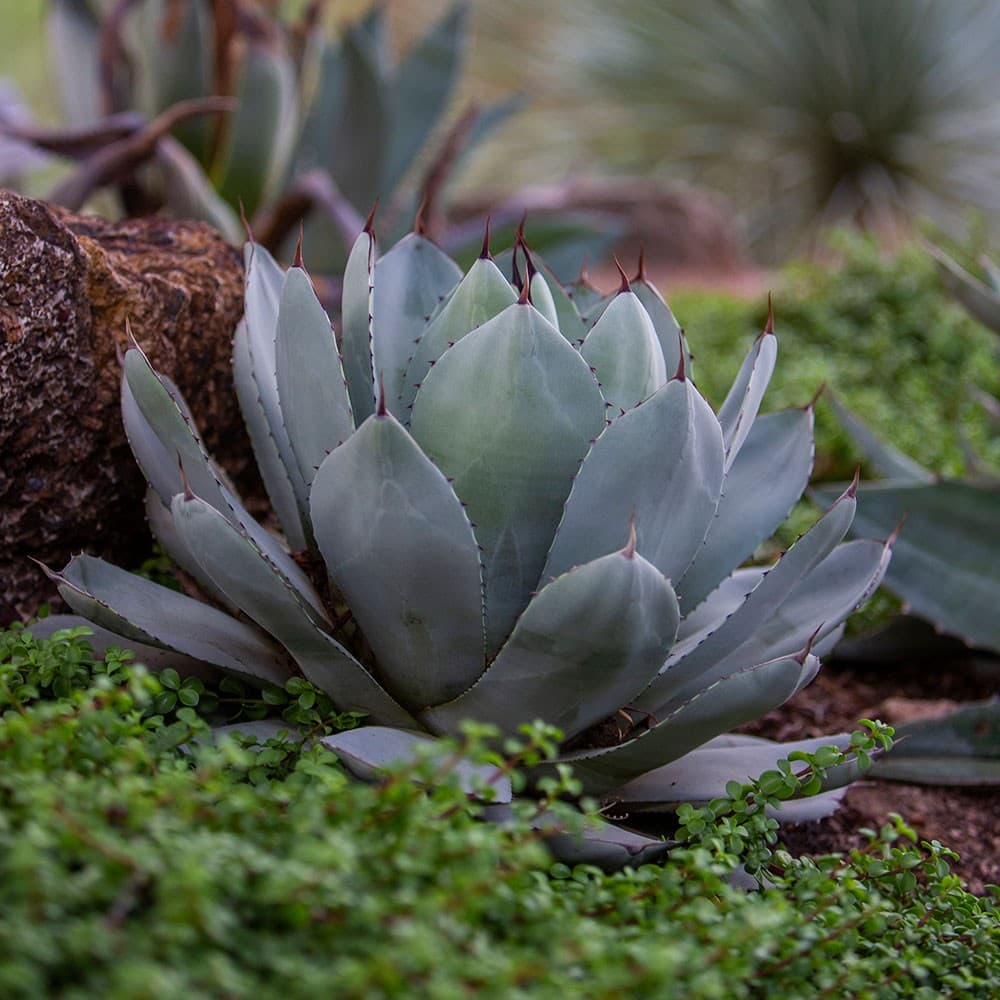
Description
The comparatively delicate structure of the low-growing elephant’s food plant, Portulacaria afra ‘prostrate form’, creates a cool, soft feel and lends the impression that the artichoke agave, Agave parryi v. truncata, is nestled into place in this restful, dreamlike scene.
Plants Included
Photo Credit
Dave Seibert, AMWUA
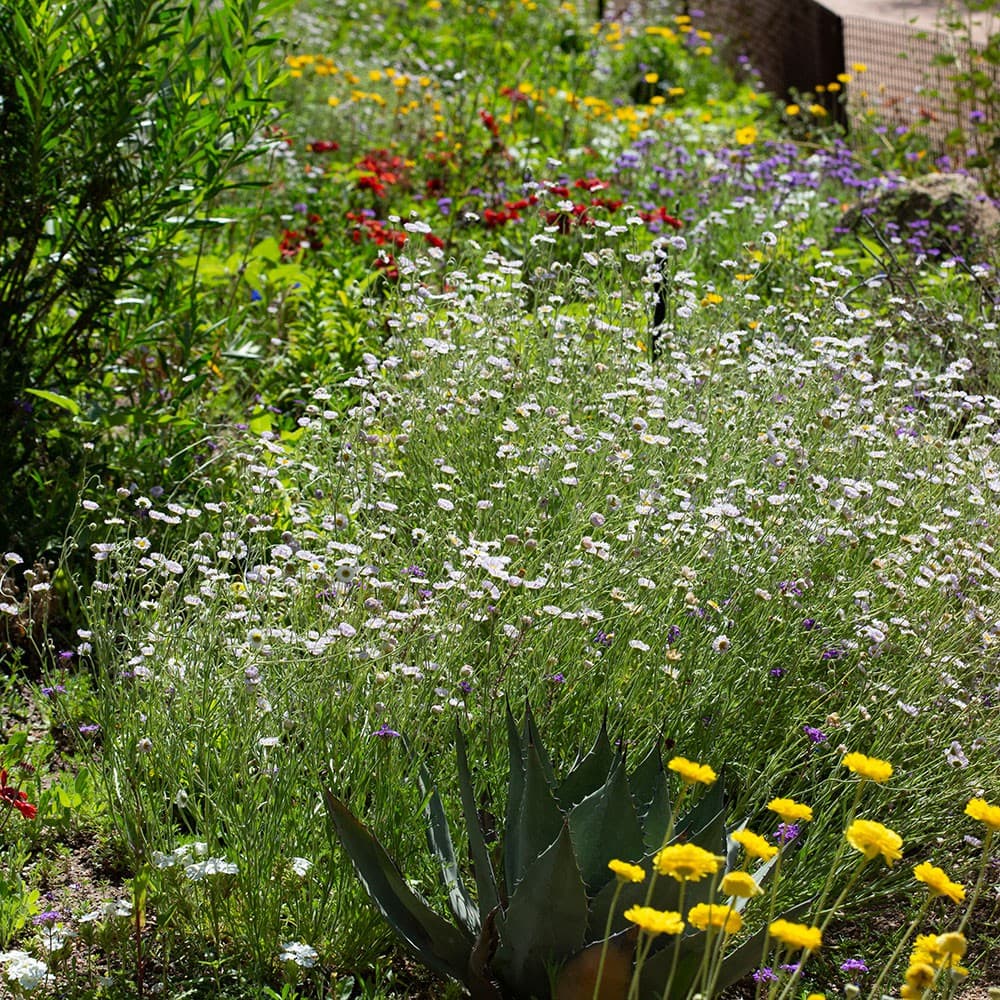
Description
A mix of desert-adapted annuals and perennials create a Monet-like display of soft spring colors. Over the years, a wildflower garden will take on its own character as plants reseed, spread and mature.
Plants Included
Photo Credit
Dave Seibert, AMWUA

Description
A simple selection of accent plants and cacti add color, texture and form, to complete the modern architectural accent in the front of this updated Phoenix residence.
Plants Included
Photo Credit
Sam Jaskolski, AMWUA
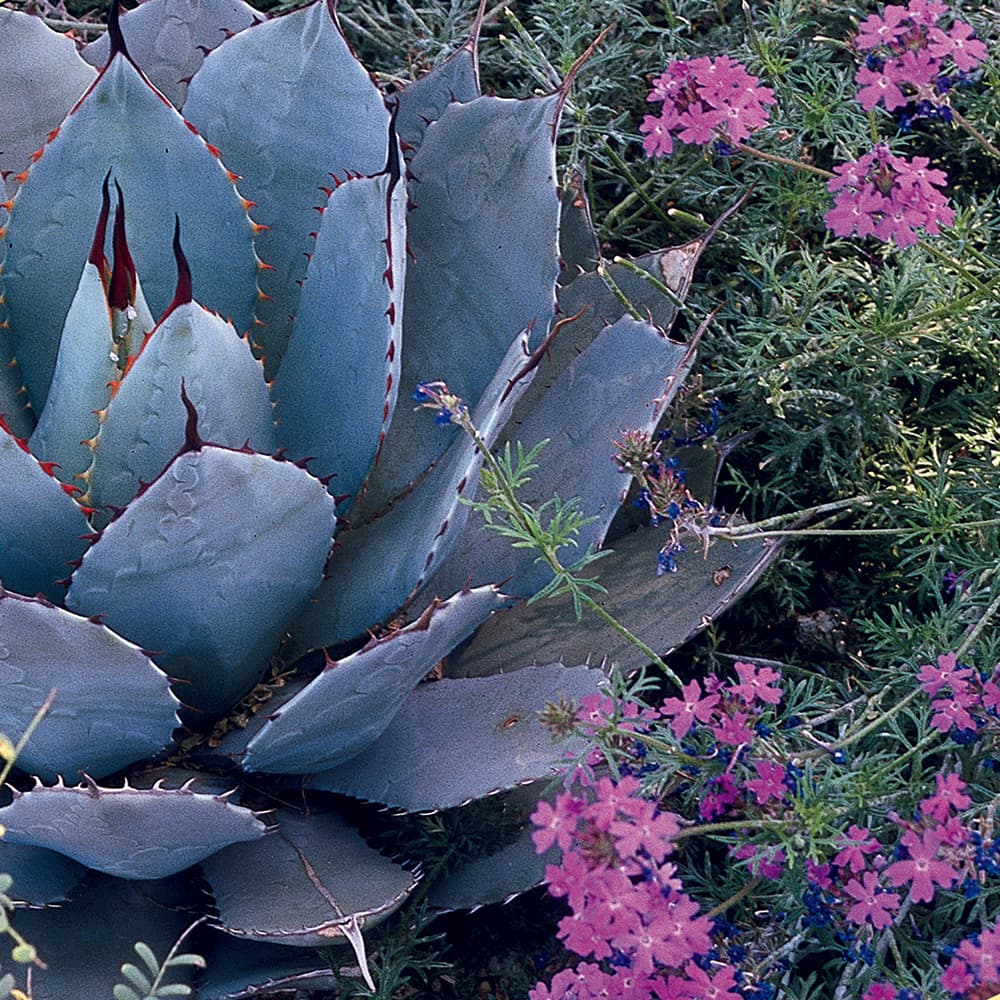
Description
The featherly, fern-like leaves and purple flowers of moss verbena are a beautiful compliment to the strong blue-grey form of Parry’s agave, Agave parryi v. truncata ‘Huntington’. Moss verbena stays low to the ground, so it won't overwhelm the relatively compact agave, which grows to about two feet tall.
Plants Included
Photo Credit
Linda Enger, from Landscaping with Style
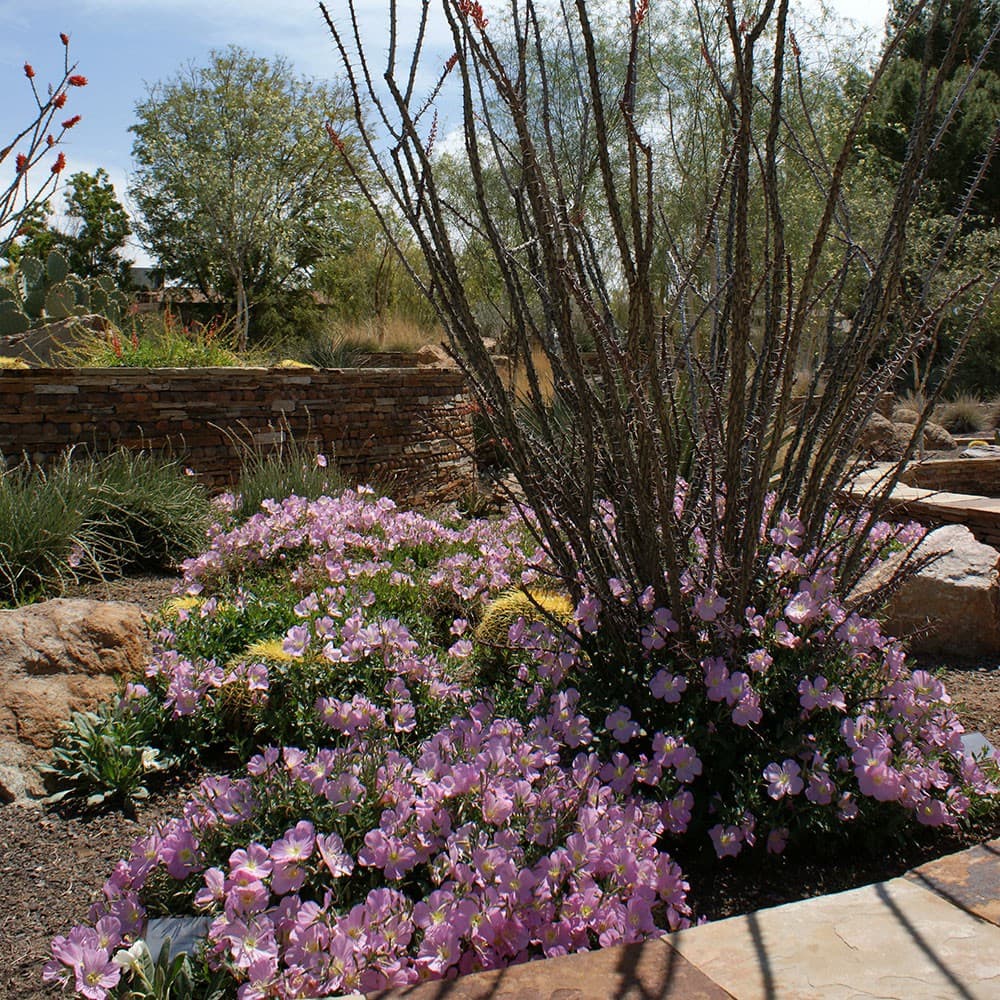
Description
A profusion of Mexican evening primroses, Oenothera berlandieri (pink), spilling through the thorny vertical branches of an ocotillo are a striking illustration of the contrasts and diversity—and even the potential for playfulness—that exist in our extreme environment. The desert has its soft side, and xeriscapes can be virtually anything our minds can imagine.
Plants Included
Photo Credit
Carol Ward
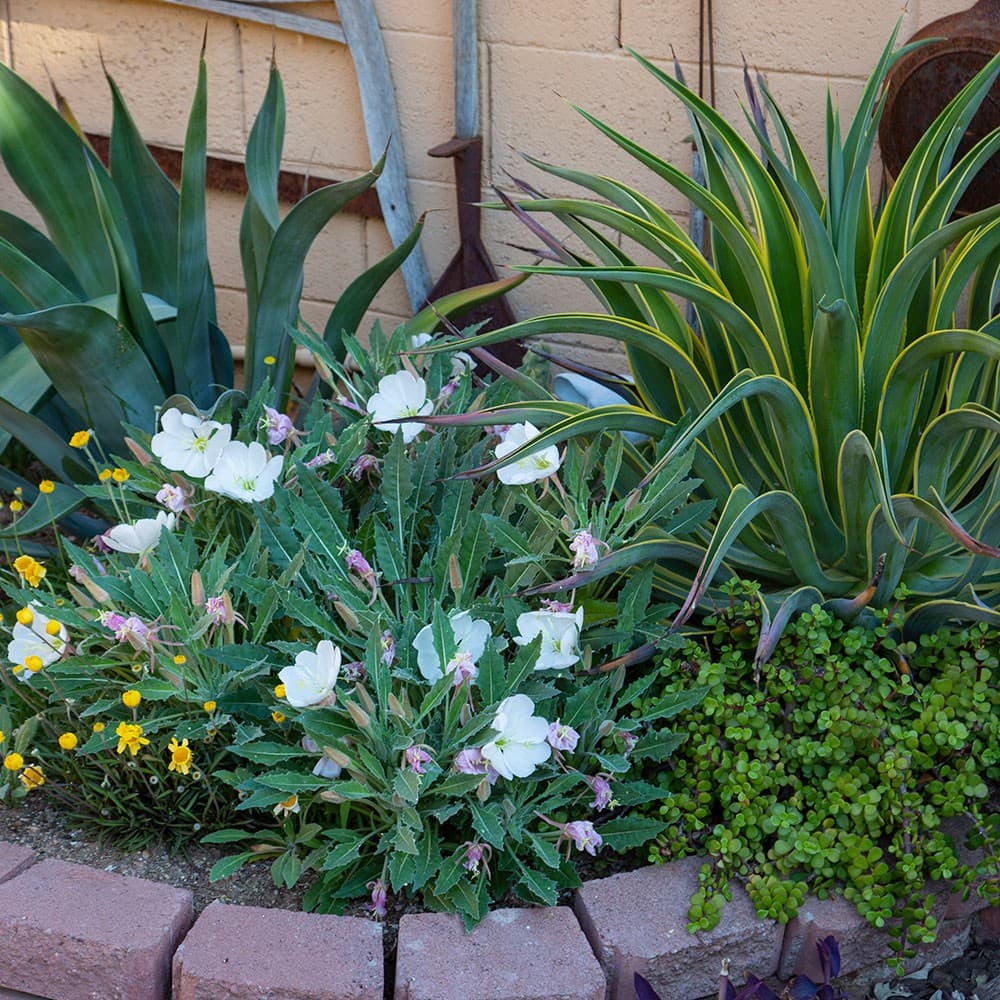
Description
A variety of textures fill this small, easy-to-replicate planting area. Two agaves (smooth agave and variegated smooth agave) serve as strong visual anchors. Yellow Angelita daisy, showy white evening primrose, and elephant’s food soften and fill out the planter. Old, rusted farm implements add interest.
Plants Included
Photo Credit
Dave Seibert, AMWUA
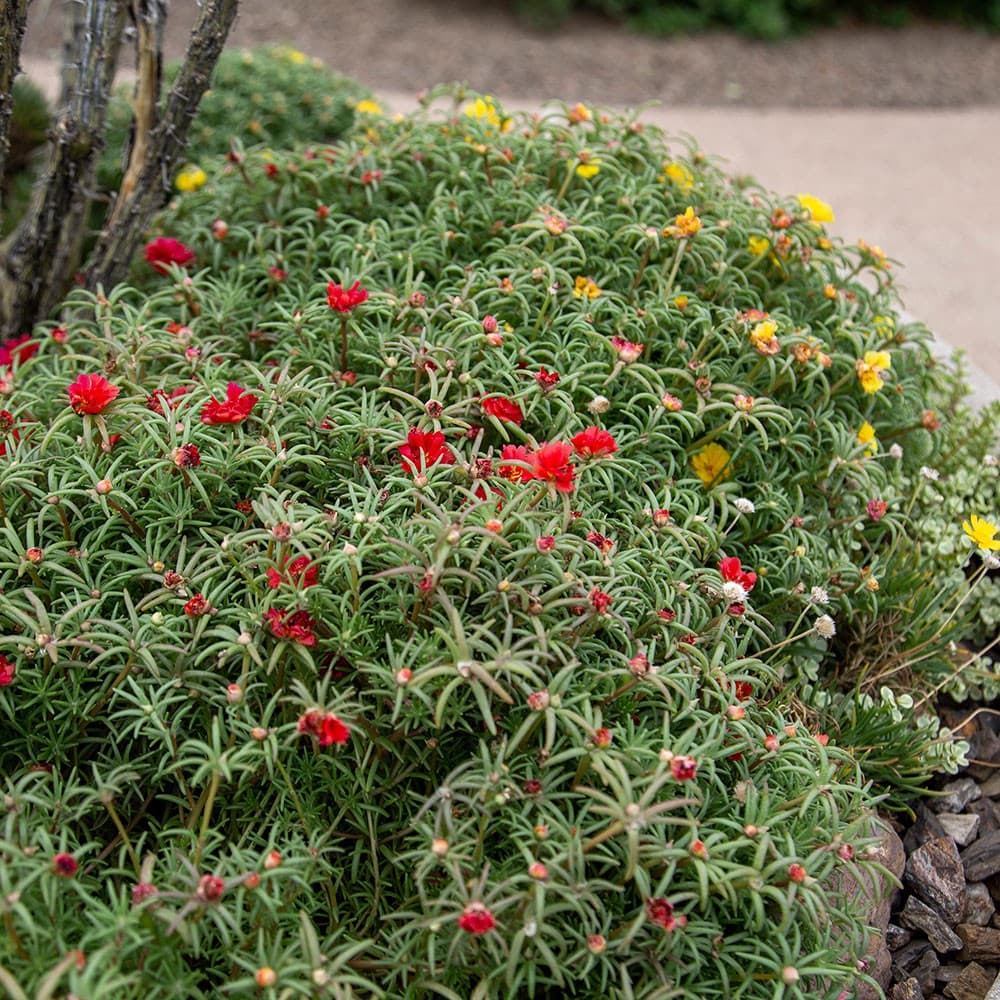
Description
A combination can be as simple as mixing colors of the same plant to add visual interest and variety. Here, red and yellow varieties of moss rose are combined to diversify the color among a bed of plants that are already rich in texture.
Plants Included
Photo Credit
Dave Seibert, AMWUA
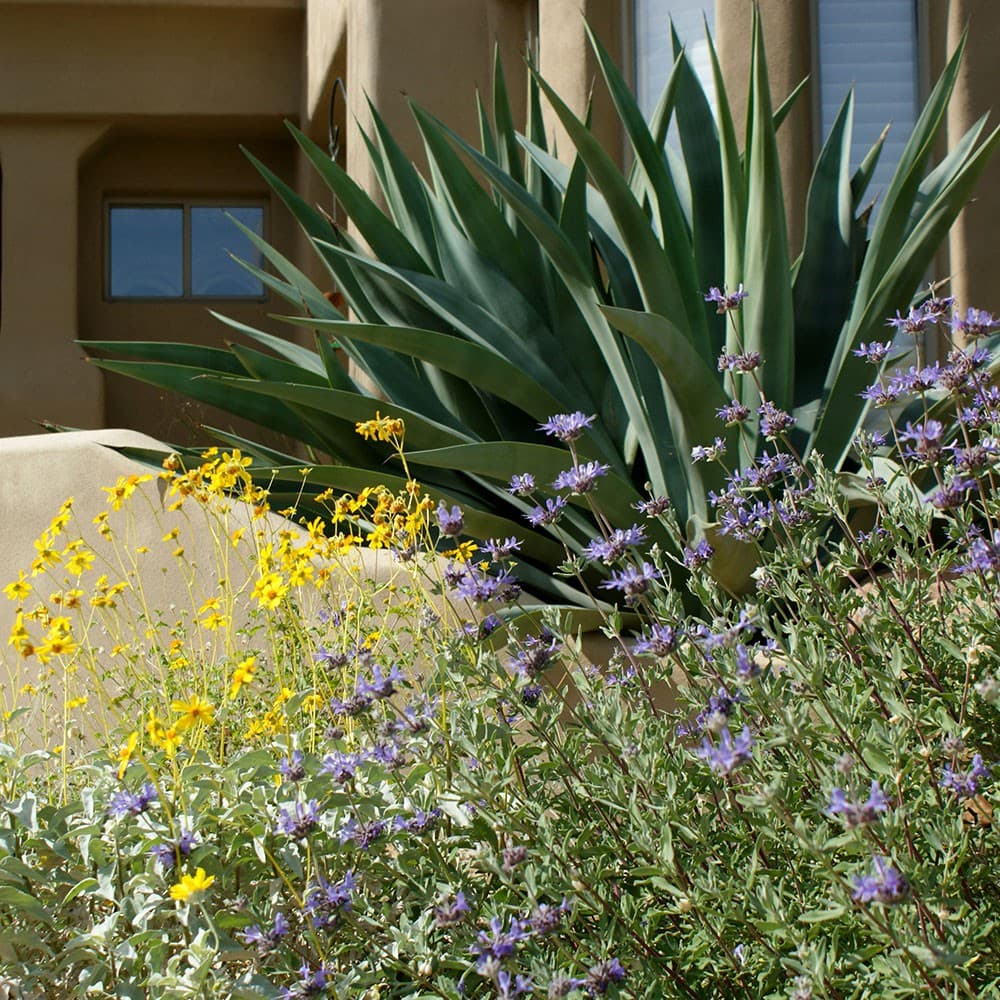
Description
A late spring combination of bright yellow brittlebush and purple chaparral sage set a colorful stage for the two large agaves in the background.
Plants Included
Photo Credit
Carol Ward

Description
Drought and heat tolerant, brightly colored blanket flowers bloom profusely from late spring into fall, drawing hummingbirds and butterflies. Combine with purple Moss verbena and delicate pink and white fleabane to further infatuate your pollinator friends.
Plants Included
Photo Credit
Dave Seibert, AMWUA
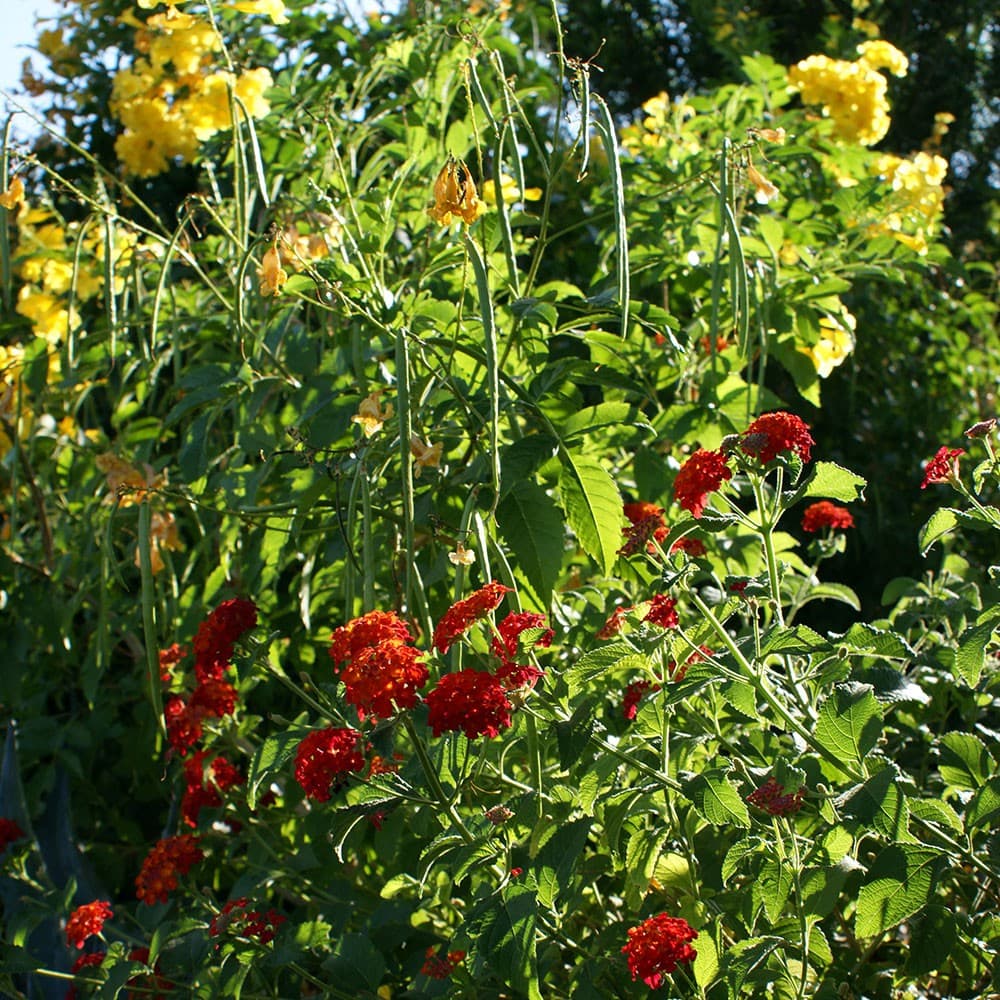
Description
As the temperatures rise, desert-adapted plants start firing up the color. The low-growing, deep orange-red variety of lantana pairs vividly with this yellow bells shrub.
Plants Included
Photo Credit
Carol Ward
